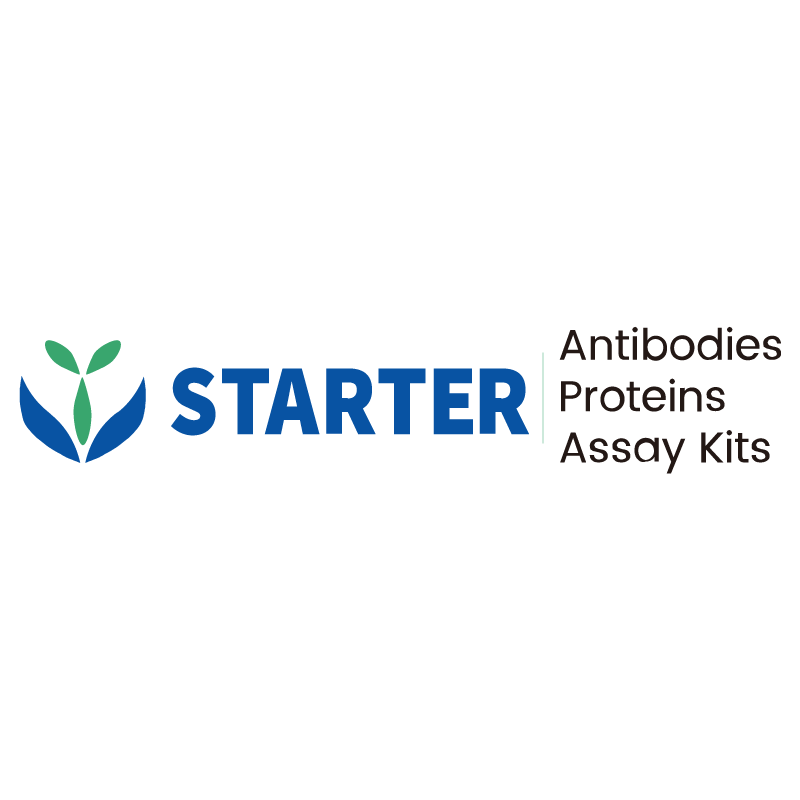WB result of CD59 Mouse mAb
Primary antibody: CD59 Mouse mAb at 1/1000 dilution
Lane 1: Raji whole cell lysate 20 µg
Lane 2: HeLa whole cell lysate 20 µg
Lane 3: HT-1080 whole cell lysate 20 µg
Lane 4: U-87 MG whole cell lysate 20 µg
Lane 5: HT-29 whole cell lysate 20 µg
Negative control: Raji whole cell lysate
Secondary antibody: Goat Anti-mouse IgG, (H+L), HRP conjugated at 1/10000 dilution
Predicted MW: 14 kDa
Observed MW: 17-24 kDa
Product Details
Product Details
Product Specification
| Host | Mouse |
| Antigen | CD59 |
| Synonyms | CD59 glycoprotein; 1F5 antigen; 20 kDa homologous restriction factor (HRF-20; HRF20); MAC-inhibitory protein (MAC-IP); MEM43 antigen; Membrane attack complex inhibition factor (MACIF); MIC11; MIN1; MIN2; MIN3; MSK21 |
| Immunogen | Recombinant Protein |
| Location | Secreted, Cell membrane |
| Accession | P13987 |
| Clone Number | S-936-1 |
| Antibody Type | Mouse mAb |
| Isotype | IgG1,k |
| Application | WB, IHC-P |
| Reactivity | Hu |
| Positive Sample | HeLa, HT-1080, U-87 MG, HT-29 |
| Purification | Protein G |
| Concentration | 2 mg/ml |
| Conjugation | Unconjugated |
| Physical Appearance | Liquid |
| Storage Buffer | PBS, 40% Glycerol, 0.05% BSA, 0.03% Proclin 300 |
| Stability & Storage | 12 months from date of receipt / reconstitution, -20 °C as supplied |
Dilution
| application | dilution | species |
| WB | 1:1000 | Hu |
| IHC-P | 1:2000 | Hu |
Background
CD59, also known as protectin or membrane attack complex inhibitory factor (MACIF), is a glycosylphosphatidylinositol (GPI)-anchored membrane protein that plays a crucial role in regulating the complement system. It is widely expressed in most human tissues and acts as a major inhibitor of the membrane attack complex (MAC) formation. The mature CD59 protein consists of 77 amino acids and is anchored to the cell membrane via a GPI anchor. By binding to complement proteins C8 and C9, CD59 prevents the assembly of the MAC, thereby protecting host cells from complement-mediated lysis. Deficiencies in CD59 expression can lead to serious disorders such as paroxysmal nocturnal hemoglobinuria (PNH), characterized by the destruction of red blood cells. Additionally, CD59 is involved in T cell signal transduction and has been implicated in various diseases, including cancer and autoimmune disorders.
Picture
Picture
Western Blot
Immunohistochemistry
IHC shows positive staining in paraffin-embedded human tonsil. Anti-CD59 antibody was used at 1/2000 dilution, followed by a HRP Polymer for Mouse & Rabbit IgG (ready to use). Counterstained with hematoxylin. Heat mediated antigen retrieval with Tris/EDTA buffer pH9.0 was performed before commencing with IHC staining protocol.
IHC shows positive staining in paraffin-embedded human placenta. Anti-CD59 antibody was used at 1/2000 dilution, followed by a HRP Polymer for Mouse & Rabbit IgG (ready to use). Counterstained with hematoxylin. Heat mediated antigen retrieval with Tris/EDTA buffer pH9.0 was performed before commencing with IHC staining protocol.
IHC shows positive staining in paraffin-embedded human hepatocellular carcinoma. Anti-CD59 antibody was used at 1/2000 dilution, followed by a HRP Polymer for Mouse & Rabbit IgG (ready to use). Counterstained with hematoxylin. Heat mediated antigen retrieval with Tris/EDTA buffer pH9.0 was performed before commencing with IHC staining protocol.
IHC shows positive staining in paraffin-embedded human endometrial cancer. Anti-CD59 antibody was used at 1/2000 dilution, followed by a HRP Polymer for Mouse & Rabbit IgG (ready to use). Counterstained with hematoxylin. Heat mediated antigen retrieval with Tris/EDTA buffer pH9.0 was performed before commencing with IHC staining protocol.


